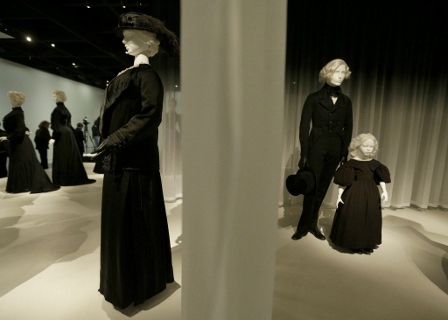
WTI Magazine #84 2016 October 17
Author : Elda Buonanno Foley Translation by:
In my latest trip to Italy a month ago, I encountered an old acquaintance of mine who, I later discovered, had just recently lost her husband. What was surprising and, in a way, remindful of the old character of Italian traditions, was that she was wearing "black" and, as she later confirmed, she would have worn dark clothes for almost a year in a sign of respect for the deceased.
Nothing wrong or strange about wearing a color that, in fashion, especially, has always been considered an example of style, elegance, and classy attire and as Franca Sozzani (Director of Vogue Magazine, Italy) refers to, "black is more than a color. It is a way of dressing". In her words, the color black is always chosen because it slims down the figure, it goes with any other color or garments, it is a quick "fix" for daily and nightly choices, and it can transform the dress from casual to elegant with the addition of a simple accessory. It is, in Sozzani's words a real "pass partout".
However, the principle I am addressing here is not the choice of the modern woman who is used to navigating in the big/small public and/or private arenas. The principle I am alluding to, is the choice of wearing the dark color to commemorate, celebrate and ultimately respect the memory of somebody who is recently passed.
Although this seems to be true for older generations and in certain areas of Italy, it is a remarkable sample of those antique, secular traditions that we have been passed from generation to generation. Seemingly, wearing black clothes to mourn the dead goes back to the Roman Empire period, when the Romans (especially the wealthy class) would use dark colors in respect of local laws that forbade the use of precious fabrics and colored garments during the funeral "season".
In 1216 Pope Innocent II established that the church and its representatives would have to choose "black and purple" for all sorts of events related to funerals (to note, this is still true today). After a break in the medieval period (when the color white was the preferred color in these occasions), and under the Spanish influence, especially in the South of Italy and around the XVI century, we would start encountering the dark color (including the black veil to cover the head) for funeral reasons.
Just to note that the color is not chosen for its inner identity of dark nature, but rather because it symbolizes the absence of light, the sadness felt and the void left by the deceased that cannot but be represented but through a "mortifying" color. It is interesting however, that black, while being the symbol of death and absence, is, by nature, the "perfect color": if you mix all the colors together, the result is a dark shade. In essence, thus, and with a more philosophical approach, the colors of life will ultimately fade away leaving space to the dark void or, the unknown. And what is considered a private mourning period, becomes a sort of public manifestation of a "common law" in regards to death which allows us to "publicize "our sadness into the public "format" of our dress.
Let me make a quick diversion here: according to the Vatican dressing code, when a female dignitary is introduced to the Pope (in a public or private environment), she needs to wear "black clothes" including a veil over her head. Only Queens are entitled to a very special dispensation: they can attend the meeting wearing all white, including the veil.
In sum, wearing black has always embodied a religious significance at least till decades ago, with a strongly felt urgency by all the female members of the deceased to wear black while projecting a period of "restriction", a closure towards all sort of entertainment, a sort of statement of observance. In today's time, it seems that this custom is restricted to the very day of the funeral (think of what happens in the Anglo Saxon world) with a choice of darker color for those relatives and siblings of the deceased for a longer period of time.
Thus, wearing black is still a powerful statement of independent choice whether it regards "final departures", or whether it deals with making bold assertions about oneself. Either way, also in this very case, we are talking about a strongly rooted use and custom that represents a way of living and an Italian way of thinking.



